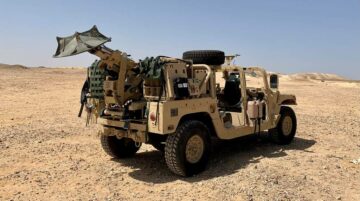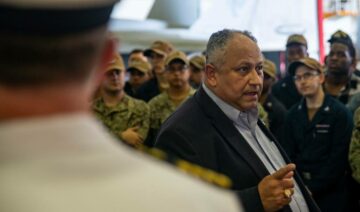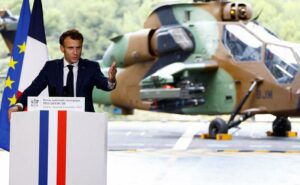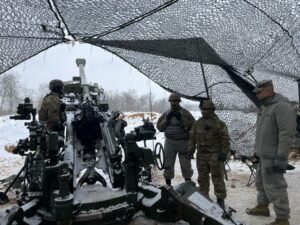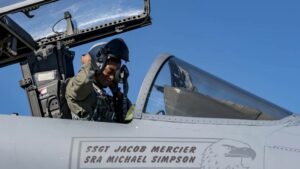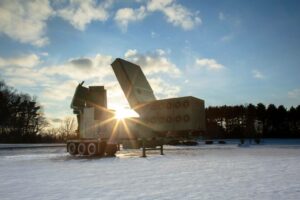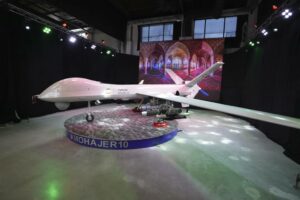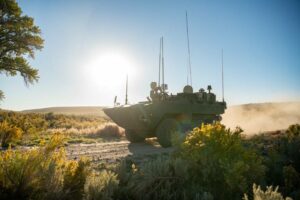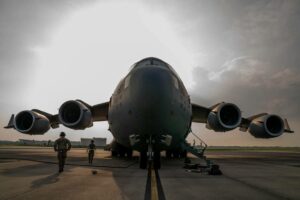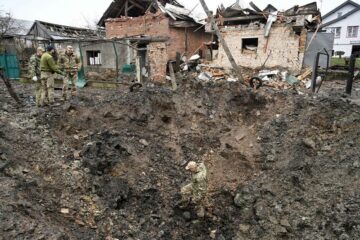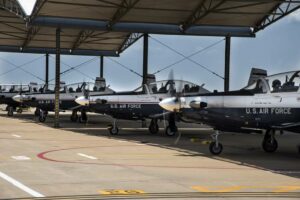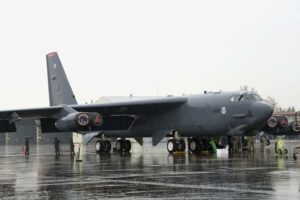The U.S. and the Republic of Korea’s navies completed a combined theater anti-submarine warfare exercise this month aimed at improving submarine tracking and engagement, amid heightened nuclear threats from North Korea.
The exercise, known as Silent Shark, comes amidst ever-further engagement between the allies, with the aircraft carrier Ronald Reagan visiting Busan this month following a trilateral South Korean-U.S.-Japanese maritime drill.
During Silent Shark, the U.S. Navy’s fast-attack submarine Topeka and South Korea’s diesel-electric submarine Jung Ji teamed up with maritime patrol and reconnaissance aircraft from the Navy’s Patrol Squadron 8 and South Korea’s Navy squadron 611, according to the U.S. Navy.
“These combined training events maintain our readiness at a high level,” Cmdr. James Fulks, commanding officer of Topeka, said in a Navy news release. “Our increasing interoperability with ROK submarines promotes democracy and provides security for the region.”
The navies conducted the exercise near Guam, allowing Jung Ji to complete several port visits to U.S. Naval Base Guam during the exercise, which first launched in 2007 and is conducted biennially. The fast-attack submarine Annapolis hosted the port visits, the Navy said.
Cmdr. Kim Il-bae, Jung Ji’s commanding officer, called the Silent Shark exercise “fierce, realistic training,” in the Navy release.
“We will deter enemy aggression and are ready to firmly defend our seas,” Kim said.
The Topeka, previously based in Guam, is now homeported at Joint Base Pearl Harbor-Hickam.
RELATED
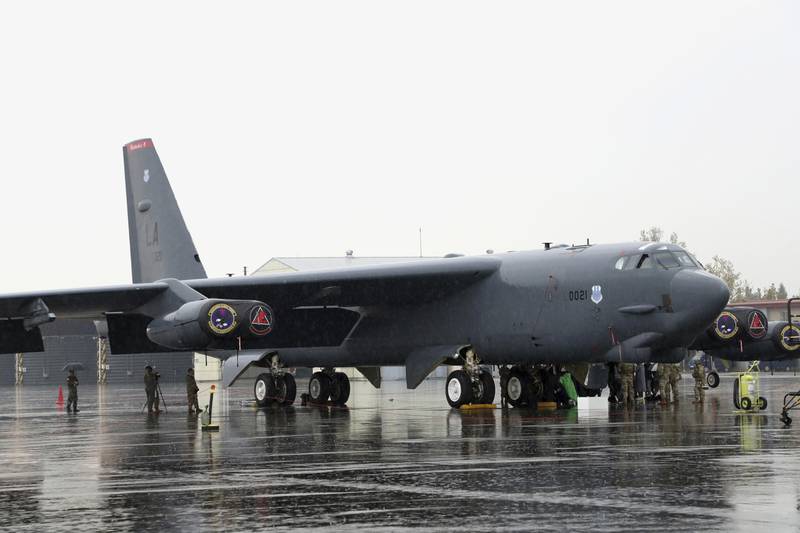
The exercise wrapped up on Oct. 22, the same day that the U.S., South Korea and Japan conducted its inaugural, trilateral aerial exercise near the Korean Peninsula.
That drill involved a nuclear-capable B-52 bomber from the United States and fighter jets from South Korea and Japan, South Korea’s air force said in a statement.
The exercises come amid concerns that North Korea is pushing to get sophisticated weapons technologies from Russia in exchange for supplying ammunition to refill Russia’s conventional arms stores that have been exhausted by its protracted war with Ukraine.
Such concerns flared after North Korean leader Kim Jong Un visited Russia’s Far East last month to meet President Vladimir Putin and inspect key weapons-making facilities.
Many experts say Kim would want Russian help to build more reliable weapons systems targeting the U.S. and South Korea.
Washington and Seoul have warned that Moscow and Pyongyang would pay a price if they move ahead with the speculated weapons transfer deal in breach of U.N. Security Council resolutions that ban any weapons trading with North Korea.
The Associated Press contributed to this report.
- SEO Powered Content & PR Distribution. Get Amplified Today.
- PlatoData.Network Vertical Generative Ai. Empower Yourself. Access Here.
- PlatoAiStream. Web3 Intelligence. Knowledge Amplified. Access Here.
- PlatoESG. Carbon, CleanTech, Energy, Environment, Solar, Waste Management. Access Here.
- PlatoHealth. Biotech and Clinical Trials Intelligence. Access Here.
- Source: https://www.defensenews.com/news/your-navy/2023/10/23/us-south-korea-conduct-anti-submarine-warfare-exercise-near-guam/
- :is
- $UP
- 1
- 19
- 2023
- 22
- 70
- 8
- a
- According
- After
- agency
- ahead
- aimed
- AIR
- Air Force
- aircraft
- Allowing
- Amid
- amidst
- ammunition
- an
- and
- any
- ARE
- arms
- AS
- associated
- At
- B-52
- Ban
- base
- based
- been
- between
- breach
- build
- busan
- by
- called
- combined
- come
- comes
- complete
- Completed
- Concerns
- Conduct
- conducted
- contributed
- conventional
- Council
- day
- deal
- Defense
- Democracy
- during
- East
- engagement
- Ether (ETH)
- events
- exchange
- Exercise
- experts
- facilities
- false
- far
- firmly
- First
- following
- For
- Force
- from
- get
- Have
- heightened
- help
- High
- hosted
- http
- HTTPS
- if
- image
- images
- improving
- in
- increasing
- Interoperability
- involved
- ITS
- james
- Japan
- Jets
- joint
- jpg
- Key
- Kim
- known
- korea
- Korea’s
- Korean
- Last
- launched
- leader
- Level
- maintain
- Maritime
- Meet
- ministry
- Month
- more
- Moscow
- move
- Near
- news
- news release
- North
- North Korea
- now
- nuclear
- Oct
- of
- Officer
- on
- our
- Pay
- photo
- plato
- Plato Data Intelligence
- PlatoData
- president
- press
- previously
- price
- promotes
- provided
- provides
- Pushing
- Putin
- Readiness
- ready
- realistic
- region
- release
- reliable
- report
- Republic
- Russia
- russian
- s
- Said
- same
- say
- Screen
- security
- Seoul
- several
- Shark
- sophisticated
- South
- South Korea
- Statement
- States
- stores
- supplying
- Systems
- targeting
- teamed
- Technologies
- that
- The
- Theater
- they
- this
- threats
- thursday
- to
- Tracking
- Trading
- Training
- transfer
- u.s.
- U.S. Air Force
- U.S. Navy
- Ukraine
- UN
- United
- United States
- us
- via
- visited
- Visits
- Vladimir Putin
- want
- war
- Weapons
- which
- will
- with
- would
- Wrapped
- zephyrnet

